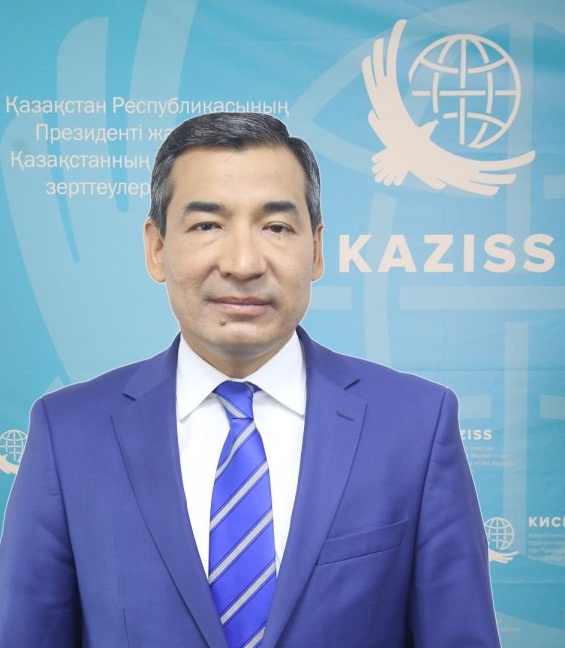ASTANA – The first Gulf Cooperation Council (GCC) – Central Asian countries summit provides a promising model of region-to-region cooperation, which will give a new impetus to partnership, said Sanat Kushkumbayev, deputy director of the Kazakhstan Institute for Strategic Studies (KazISS), in an interview with The Astana Times.

Sanat Kushkumbayev, deputy director of the Kazakhstan Institute for Strategic Studies (KazISS). Photo credit: kisi.kz.
The summit, held in Jeddah (Saudi Arabia) on July 19, provided an opportunity for leaders to review relations in many fields, including trade and investment cooperation, the energy sector, tourism, transportation and logistics, and agriculture.
Region-to-region interaction will have a strong role to play in amplifying the potential of both regions, said Kushkumbayev.
“This format is very convenient from the point of view of Central Asia’s [place in the international arena]. Increasing number of regions and countries in the world note the similarity of many issues that are on their agenda with those in Central Asian states,” he said.
With 70 million people in the Gulf region and over 75 million people in Central Asia, both regions are compatible in potential, said Kushkumbayev.
“For example, the market for Tajikistan is 10 million people, the Kyrgyz Republic is eight million, and Kazakhstan is 20 million, but if we are talking about a market of 75 million people [as a whole], it is more attractive. Therefore, the ‘region with region’ model of cooperation becomes more interesting. The synergy of combining different potentials gives a more cumulative long-term effect. That’s why this format is very beneficial,” said Kushkumbayev.
A similar calculus holds for other parts of the world where regional cooperation has been historically beneficial. The governments in the Gulf region have focused on cooperation and integration that serve their key objectives since 1981.
“In political terms, I think the model of the Cooperation Council of Arab States is very interesting because they evolved from two or three-side contacts in the beginning. Then they united on the basis of common values, interests and a common agenda and created a cooperation council. It should be noted that the organization was created in 1981, that’s 42 years ago,” said Kushkumbayev.
“The model of the Cooperation Council for the Arab States of the Persian Gulf is also interesting because, on the one hand, it does not limit each country’s sovereignty, which is a concern for many countries. On the other hand, they are flexible, as the council enables [members] to institutionalize, decide, and set long-term strategic goals within the institution,” he added.
Perhaps a better strategy for Central Asian states would be to look for closer cooperation, moving to a council model, Kushkumbayev suggested.
“Central Asia has a consultative format, it is already more than five years old. But now we should think about moving from a consultative format to a council,” he proposed.
The two regions are also bound by vast economic, cultural and historic ties.
“It is clear that we have a cultural-historical background: the Arab states are united by the Islamic religion. Central Asia is also at the northern periphery of the Organization of Islamic Cooperation. There is also a cultural and historical background that creates a strong cultural and humanitarian attraction and opens up opportunities for a trustful and more lasting dialogue,” said Kushkumbayev.
There is vast potential to enhance cooperation between the two regions in the energy, transportation and agriculture sectors, he suggested.
“There are significant reserves of resources for the development of our agriculture in Central Asia. The President [Kassym-Jomart Tokayev] mentioned that we are ready to increase exports to Gulf countries by 100 commodity items, which are primarily our agricultural products – flour and wheat. Kazakhstan, as the largest producer, is seeing increasing demand not only from our neighbors in Central Asia, but from Asian countries as a whole,” said Kushkumbayev.
The Gulf countries have invested approximately $3.6 billion in Kazakhstan’s economy. According to Kushkumbayev, there is significant potential to increase this.
“The multimodal potential of transportation is not even a tenth of its potential. This offers great prospects for trade and economic interaction. Transportation routes, their strength and stability, speed and cost-effectiveness open up huge possibilities for trade engagement,” he said.
“Historically, due to Kazakhstan being a land-locked country, transportation costs account for a large share of our exports. If we don’t reduce transportation costs and build new arteries that are cheaper and more productive, our competitiveness will be in question,” warned Kushkumbayev.
Central Asia has established itself as an evolving region with great potential, which was voiced by the participants of the Central Asian Security and Cooperation Forum on July 13 in Astana, noted Kushkumbayev.
“They look at Kazakhstan and the Central Asian region with great interest, rediscovering its potential and seeing that the stereotypical picture of the past decade is already a thing of the past,” he said.
The interest in Asian countries and so-called middle powers is growing as well.
“If the center of gravity was previously in the European Union and North America, now Asia has huge potential along with the Middle East, South Asia, Central Asia, the Caucasus and Türkiye. Tectonic shifts have occurred. And Kazakhstan is also in focus,” concluded Kushkumbayev.

